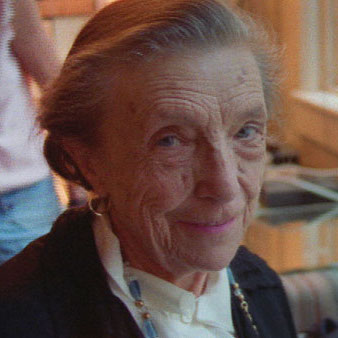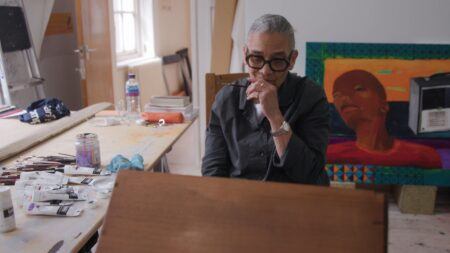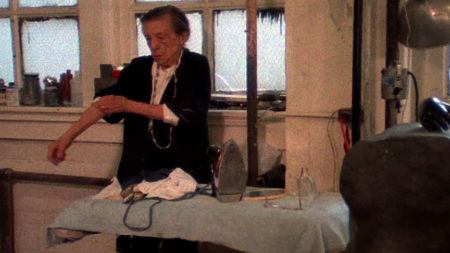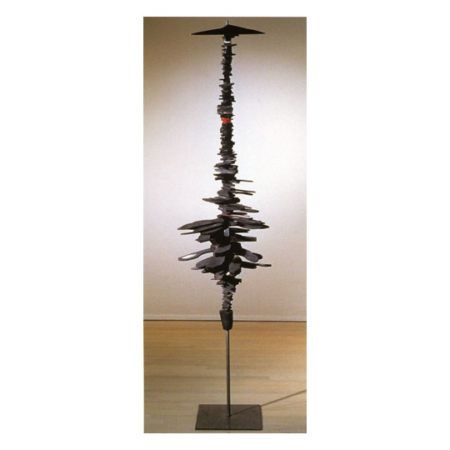Louise Bourgeois

Louise Bourgeois was born in Paris in 1911. She first studied mathematics at Sorbonne University before pursuing a degree in arts at various schools around Paris, including the Ecole du Louvre, Académie des Beaux-Arts, Académie Julian, and Atelier Fernand Léger. In 1938, she immigrated to the United States, continued her studies at the Art Students League in New York, and began making sculptures on the roof of her apartment. Bourgeois’s early sculptures were composed of groupings of abstract shapes, often carved from wood. By the 1960s, the artist began to execute her work in rubber, bronze, and stone, and the pieces themselves became larger and more referential to what has become the dominant themes of her work: her childhood, familial trauma, and loneliness.
In her first major sculptural series, Personnages (1947-1953), the artist used discarded wood to create abstract and totemic sculptures representing the friends and family she had lost contact with during the war. In Femme Volage (1951), one of the sculptures in the series, small scraps of black wood spiral out of a singular stainless steel pole, resembling a spine. The Blind Leading the Blind (1949), another sculpture from the series, consists of twelve wooden planks placed together in twin rows and held solely by a lintel board. Each of these works references an interplay between strength and fragility that becomes a constant in the artist’s oeuvre. Although individual works, Bourgeois intended for these sculptures to be grouped together to create different installations that reference a life now lost.
In the 1960s, Bourgeois dramatically shifted her practice, moving from wooden abstract sculptures to larger more organic works that directly referenced her childhood. She famously stated, “My childhood has never lost its magic, it has never lost its mystery, and it has never lost its drama.” In 1993, the artist was commissioned to create Helping Hands, a sculptural series that memorialized Jane Addams. Bourgeois used six stone pedestals as the platforms on which she placed carved black granite hands. Using plaster casts of her own hands, the artist looked to her childhood and her own feelings of helplessness as the inspiration behind the piece. In another sculpture, commissioned for the opening of the Tate Modern in 2000, the artist created Maman (1999), a towering thirty-foot sculpture of a spider. As indicated by the title, “Maman” is a tribute to Bourgeois’s mother, a weaver, and marked the beginning of her public display of spider-like sculptures, drawings, and lithographs. Bourgeois’s spiders are understood as representations of maternity, seen as both predators and protectors. Bourgeois’s work, while deeply autobiographical, is universal in its focus on childhood, maternal love, and longing.
Louise Bourgeois lived in New York, where she passed away in May 2010.





